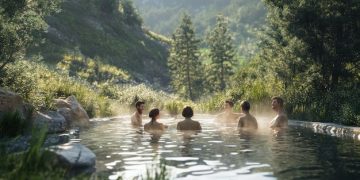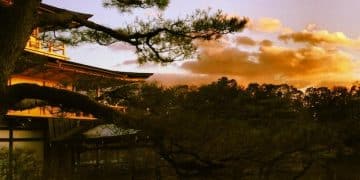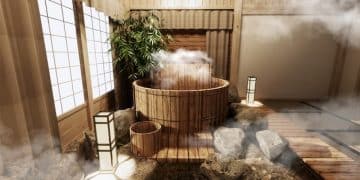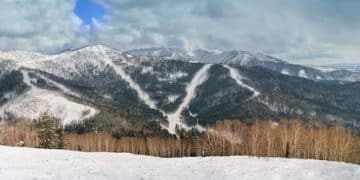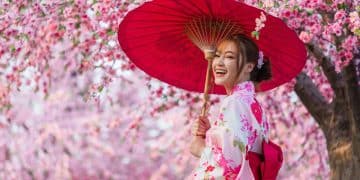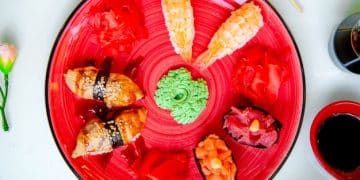Japan Onsen Guide: Hot Springs for US First-Timers
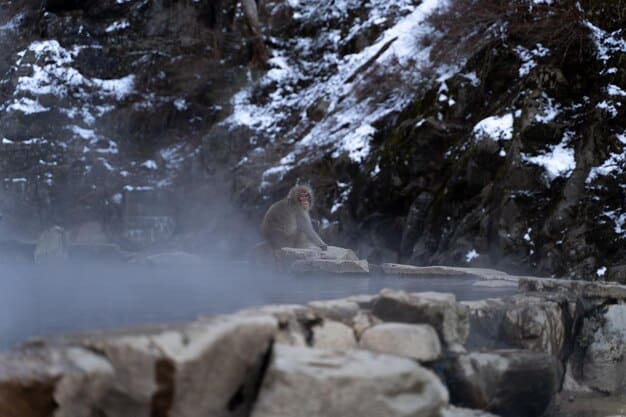
Japan’s onsen experience offers US first-timers a unique cultural immersion and relaxation opportunity through bathing in natural hot springs with therapeutic benefits, requiring adherence to specific etiquette for an optimal visit.
Planning your first trip to Japan? Don’t miss out on the quintessential Japanese experience of visiting an onsen! This guide will help US travelers navigate the world of Japanese hot springs.
Japan’s Onsen Experience: A Dive into Japanese Hot Springs for US First-Timers
The allure of Japan, with its vibrant culture and breathtaking landscapes, draws travelers from across the globe. Among its many attractions, the Japan’s onsen experience stands out as a must-try for those seeking relaxation and cultural immersion, especially for US first-timers.
What is an Onsen? Understanding the Cultural Significance
An onsen is a Japanese hot spring. However, it’s much more than just a hot bath; it’s a cultural institution deeply rooted in Japanese history and tradition. Understanding this significance is key to appreciating your onsen experience.
The History of Onsen
Onsen have been used for centuries in Japan, originally for medicinal purposes. The mineral-rich waters are said to have therapeutic benefits, and people traveled long distances to soak in them. Over time, onsen evolved into social spaces and places of relaxation.
The Cultural Significance
For the Japanese, onsen are places to unwind, connect with nature, and escape the stresses of daily life. They are often located in beautiful natural settings, enhancing the sense of tranquility. The communal aspect of onsen is also important, fostering a sense of community and shared experience.
- Medicinal Benefits: The waters are rich in minerals thought to heal various ailments.
- Relaxation: The warmth and ambiance are calming and stress-reducing.
- Social Connection: It’s a communal activity promoting interaction and bonding.
Understanding the history and cultural significance of onsen allows US first-timers to fully appreciate the experience and avoid cultural faux pas.
Types of Onsen: Finding the Right Fit for You
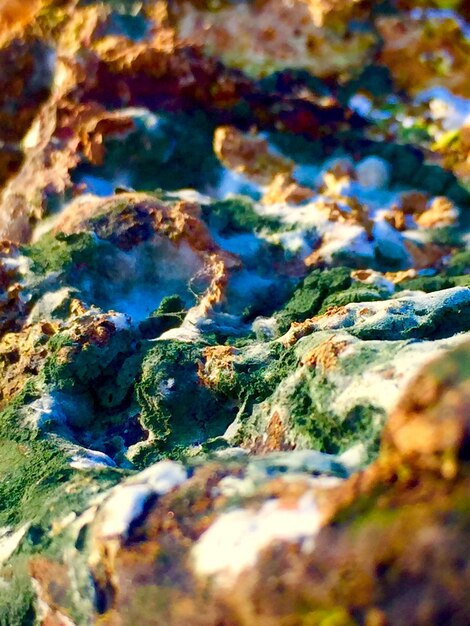
Not all onsen are created equal. There are various types, each with its unique characteristics and benefits. Knowing the different types will help you choose the onsen that best suits your preferences.
Indoor vs. Outdoor Onsen
Indoor onsen (utsuburo) are typically located within a building and offer a more controlled environment. Outdoor onsen (rotenburo) are situated in nature, often with stunning views of mountains, gardens, or the sea.
Mineral Composition
The mineral composition of the water varies depending on the location of the onsen. Some common minerals include sulfur, iron, and sodium bicarbonate, each with its own potential health benefits.
- Sulfur Onsen: Known for its distinctive smell and skin-softening properties.
- Iron Onsen: Characterized by its reddish-brown color and potential benefits for anemia.
- Sodium Bicarbonate Onsen: Known to leave skin feeling smooth and moisturized.
Exploring the different types of onsen allows US first-timers to tailor their experience and discover their personal preferences. Whether you prefer the tranquility of an outdoor rotenburo or the therapeutic benefits of a specific mineral composition, there’s an onsen for everyone.
In summary, understanding the different types of onsen allows you to personalize your experience based on your preferences and health goals.
Onsen Etiquette: A Guide to Proper Bathing
Onsen etiquette is crucial for a respectful and enjoyable experience. While it may seem daunting at first, following these guidelines will ensure you fit right in. Remember that onsen are communal spaces, and respecting local customs is essential.
Before Entering the Bath
Before entering the bathing area, you’ll need to undress completely in the designated changing room. Remove all clothing, including jewelry and accessories. You’ll typically find small lockers or baskets to store your belongings.
Washing and Cleansing
Before entering the onsen, you must thoroughly wash and rinse your body. This is usually done at a designated washing station equipped with showers, stools, and toiletries. Use soap and shampoo to cleanse your body and hair before entering the hot spring.
In the Bath

Once you’re clean, you can enter the onsen. Avoid jumping or diving into the water. Slowly ease yourself in to allow your body to adjust to the temperature. It’s customary to bring a small towel with you, which can be used for modesty or to wipe your face.
- No Swimsuits: Onsen are traditionally enjoyed naked. Swimsuits are generally not allowed, except in specific mixed-gender onsen.
- Keep Hair Out of the Water: If you have long hair, tie it up or use a towel to keep it out of the water.
- Be Quiet and Respectful: Maintain a peaceful atmosphere and avoid loud conversations.
Mastering onsen etiquette enhances your experience and shows respect for Japanese traditions. By following these guidelines, US first-timers can ensure a comfortable and enjoyable visit.
In summary, mastering onsen etiquette shows respect for Japanese culture and ensures a pleasant experience for everyone.
Onsen for First-Timers: Essential Tips and Advice
If you’re a US first-timer, navigating the world of onsen can feel a bit overwhelming. Here are some essential tips and advice to help you prepare for and enjoy your onsen experience.
Preparing for Your Visit
Before heading to an onsen, do some research. Read reviews, check the facilities, and understand the specific rules of the onsen you plan to visit. If you have tattoos, be sure to inquire about the onsen’s policy, as tattoos are sometimes prohibited.
What to Bring
Most onsen provide basic toiletries, but it’s a good idea to bring your own. A small towel is essential for drying off and maintaining modesty. You may also want to bring your own shampoo, conditioner, and body wash, especially if you have sensitive skin.
What to Expect
Be prepared for the heat. Onsen waters are typically quite hot, so allow your body to adjust gradually. If you start to feel dizzy or lightheaded, take a break and cool off. Remember to stay hydrated by drinking plenty of water before and after your soak.
- Tattoos: Some onsen may prohibit tattoos, so check in advance.
- Hydration: Drink plenty of water to avoid dehydration.
- Heat: Allow your body to adjust to the hot water gradually.
With a little preparation and knowledge, US first-timers can have a truly memorable onsen experience. Embracing the culture and traditions of onsen is key to enjoying this unique aspect of Japanese life.
In short, preparing for your onsen visit ensures a comfortable and enjoyable experience, allowing you to fully embrace Japanese culture.
Top Onsen Destinations in Japan for US Travelers
Japan boasts numerous onsen destinations, each offering its unique charm and attractions. Here are some of the top onsen destinations that are particularly appealing to US travelers.
Hakone
Located near Tokyo, Hakone is a popular onsen resort town known for its stunning views of Mount Fuji and its numerous hot springs. It’s easily accessible and offers a variety of onsen experiences, from traditional ryokan to modern spas.
Kusatsu
Kusatsu Onsen is renowned for its high-acidity waters, which are said to have powerful healing properties. The town is centered around a Yubatake, a wooden structure that cools the hot spring water before it’s piped to the various onsen.
Beppu
Beppu is famous for its “hells” or jigoku, which are unique hot spring formations that are more for viewing than bathing. However, Beppu also has numerous onsen where you can relax and enjoy the therapeutic waters.
- Hakone: Offers stunning views of Mount Fuji and is easily accessible from Tokyo.
- Kusatsu: Known for its high-acidity waters and unique Yubatake.
- Beppu: Famous for its unique “hells” and diverse onsen experiences.
Exploring these onsen destinations offers US travelers a chance to experience the diverse and captivating world of Japanese hot springs. Each location boasts its unique charm and attractions, providing a memorable and enriching experience.
In summary, these top onsen destinations offer unique attractions and experiences that cater to different preferences.
Beyond the Bath: Exploring Onsen Towns
The onsen experience extends beyond the baths themselves. Many onsen are located in charming towns that offer a glimpse into traditional Japanese culture. Exploring these towns can be just as rewarding as soaking in the hot springs.
Local Cuisine
Onsen towns are often known for their local cuisine. Many restaurants serve dishes made with fresh, local ingredients. Some popular onsen town specialties include onsen tamago (hot spring eggs) and local seafood.
Traditional Crafts
Many onsen towns are also centers for traditional crafts. You can find shops selling handmade pottery, textiles, and other local products. Visiting these shops is a great way to support local artisans and bring home a unique souvenir.
Festivals and Events
Onsen towns often host festivals and events throughout the year. These events can provide a glimpse into local traditions and customs. Check the local event calendar to see if there are any festivals happening during your visit.
- Local Cuisine: Indulge in regional dishes made with fresh ingredients.
- Traditional Crafts: Discover and purchase unique handmade products.
- Festivals and Events: Experience local traditions and customs.
Exploring onsen towns enriches your understanding of Japanese culture and provides a holistic travel experience. By engaging with local communities and traditions, US travelers can create lasting memories.
In short, exploring onsen towns adds depth to your onsen experience, allowing you to immerse yourself in local culture and traditions.
| Key Point | Brief Description |
|---|---|
| ♨️ What is Onsen? | Japanese hot springs with cultural and medicinal significance. |
| 👘 Onsen Etiquette | Important to wash before entering and respect communal rules. |
| 📍 Top Destinations | Hakone, Kusatsu, and Beppu offer unique onsen experiences. |
| 🏯 Onsen Towns | Explore local cuisine and crafts for a richer experience. |
FAQ About Japan’s Onsen
▼
It’s recommended to bring a small towel for modesty and drying off. Some onsen provide towels for a fee, but having your own is convenient. Larger hotels often provide them free of charge.
▼
Tattoos are sometimes prohibited due to their historical association with organized crime. Some onsen allow them if covered with a bandage or sticker, while others may be tattoo-friendly.
▼
Use the provided showers or washing stations to thoroughly cleanse your body with soap and shampoo. Rinse off completely and ensure no soap residue remains before entering the onsen.
▼
Start with short intervals of 5-10 minutes to allow your body to adjust to the heat. Take breaks to cool off and rehydrate. Limit your total soaking time to 20-30 minutes to avoid overheating.
▼
Yes, some onsen offer mixed-gender bathing, often requiring swimsuits. These are less common than gender-separated onsen, so check in advance if you prefer this option. They are often called “konyoku”.
Conclusion
Visiting a Japanese onsen is a truly unique and enriching experience for US first-timers. By understanding the cultural significance, types of onsen, and proper etiquette, you can fully embrace this tradition and create lasting memories of your trip to Japan.
